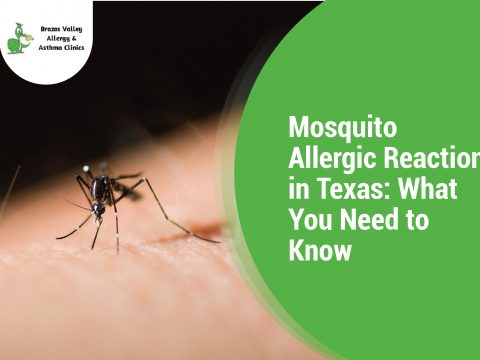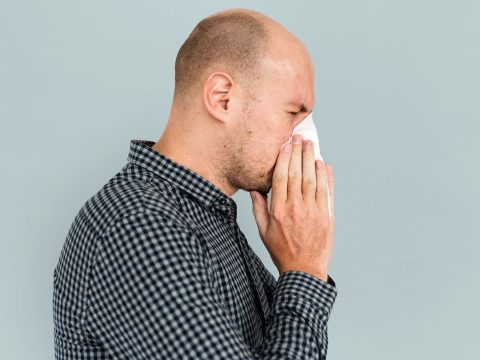- 979-485-9287
- office@bvallergy.com
-
 979-251-7804
979-251-7804
Summer Allergens in the Brazos Valley: What You Need to Know

From Outdoors to Indoors: Managing Summer Allergies Effectively
July 16, 2025
Is It Allergies or a Sinus Infection? How to Tell During the Fall Cold Season
October 7, 2025While August in Texas brings warm days and outdoor fun with loved ones, summer allergens in the Brazos Valley region can make it harder to fully enjoy these sunny moments.
Every year, we hear the same story from people who expected relief once spring pollen faded: “I thought spring was the worst for allergies, but here I am in August still sneezing, coughing, and rubbing my eyes!”
The truth is, allergies don’t take the summer off. In fact, our region is home to a number of triggers that keep symptoms flaring well into the hottest months.
In this blog, we’ll walk you through the common allergens that peak at this time of year, share practical summer allergy prevention tips, and help you recognize when it might be time to consider professional allergy treatment in the Brazos Valley.
Find Out What’s Fueling Summer Sneezes
Common Summer Allergy Triggers in Texas
Keeping an eye on daily pollen counts in the Brazos Valley can help you recognize patterns and prepare for potential flare-ups. Factors like high pollen levels, humidity spikes, and poor air quality can worsen allergy symptoms. Even if you don’t know every specific trigger, you can still take steps to manage your allergies.
Here are some of the most common summer allergy triggers in Texas that you should watch out for:
1. Grasses
Grasses are among the most common summer allergens in the Brazos Valley region. Local varieties like Bermuda, ryegrass, and orchard grass release pollen that peaks in late spring and can persist into summer months. Even freshly cut lawns can stir up pollen, making grass pollen allergies a frequent concern for many Texans.
Pro Tip:
For those seeking grass allergy relief, try wearing a mask while mowing, or better yet, let someone else handle lawn duty. Showering right after being outdoors also helps wash pollen off your skin and hair, reducing exposure.
2. Weeds
While ragweed typically makes its grand entrance in late summer and early fall, certain weeds in the Brazos Valley, like amaranthus (pigweed), marsh elder, and pellitory, start releasing pollen earlier. By July and August, the ragweed season starts in Texas, setting the stage for one of the most potent allergens in the region. For many residents, this can trigger ragweed pollen allergies, resulting in sneezing, itchy eyes, and congestion, even if the plants aren’t right in your yard.
A single ragweed plant can release billions of pollen grains that travel miles, making exposure unavoidable.
Pro Tip:
Keep windows closed on high pollen days, use air purifiers indoors, and check daily pollen counts to reduce exposure and manage symptoms.
3. Mold Spores
Summer humidity in Texas is no joke, creating the perfect environment for mold to thrive. Outdoor mold grows on soil, grass, compost piles, and decaying plants, while indoor mold can appear in bathrooms, kitchens, or anywhere moisture collects.
Unlike pollen, mold doesn’t follow a set “season.” It can persist year-round, with counts often spiking during the summer. Mold spores that trigger summer allergies may cause runny noses, itchy throats, coughing, and heightened asthma attacks for some residents.
Pro Tip:
Take steps in controlling mold allergies in the summer by using dehumidifiers, cleaning damp areas, and keeping windows closed on humid days.
4. Trees and Shrubs
While tree pollen is often associated with spring, certain summer-blooming trees and shrubs can continue to trigger seasonal allergies in the Brazos Valley well into the warmer months. In our region, trees like mulberry, walnut, and willow may release pollen later in the year, contributing to ongoing nasal congestion, itchy eyes, and sneezing.
Pro Tip:
Limit outdoor activities during high pollen days, keep windows closed, and shower after spending time near trees and shrubs to reduce exposure and relieve symptoms.
5. Insects
Summer in the Brazos Valley brings more bees, wasps, fire ants, and mosquitoes. For most people, insect bites are minor annoyances, but for those with venom allergies, even a single sting can trigger severe reactions, known as anaphylaxis, that require immediate medical attention.
Even without allergies, bites can irritate skin and worsen allergy symptoms in summer, such as rashes or eczema flare-ups. Staying aware of insect activity and taking precautions can reduce risks.
Pro Tip:
Wear long sleeves and pants when outdoors, use insect repellent, and keep outdoor eating areas clean to minimize exposure. If you have a known insect venom allergy, always carry an epinephrine auto-injector and seek immediate help if stung.
6. Air Quality and Pollution
Summer heat and stagnant air in the Brazos Valley can trap pollutants like ozone and particulate matter, worsening asthma and allergy symptoms. Hot, hazy afternoons may leave you breathing heavier or feeling eye and throat irritation.
Pro Tip:
Check local air quality reports before spending time outdoors, limit strenuous activities on high-pollution days, and consider using air purifiers indoors to reduce exposure and protect your respiratory health.
Allergy Symptoms to Watch For
Summer allergens often trigger the same classic symptoms you’d expect in spring. These include:
- Sneezing
- Runny or stuffy nose
- Itchy, watery eyes
- Postnasal drip
- Coughing or wheezing
- Worsening asthma or shortness of breath
- Fatigue or trouble sleeping due to congestion
Beat Summer Allergies with Help from Brazos Valley Allergy & Asthma Clinics

Summer in the Brazos Valley brings long days outdoors, but also seasonal allergens like grass and weed pollen, mold spores, tree pollen, and insect bites. If over-the-counter treatments don’t help, allergies interfere with daily life, or asthma worsens, it’s time to see an allergist.
At Brazos Valley Allergy & Asthma Clinics, we identify triggers through testing and create personalized treatment plans, which may include:
- Prescription medications
- Allergen immunotherapy (shots or drops)
- Asthma management plans
- Emergency action plans for insect venom allergies
Our goal is to help you manage symptoms and enjoy life without constant interruptions from summer allergy triggers in Texas.
Book your visit at any Brazos Valley Allergy & Asthma Clinic location today and take control of your allergies this summer.
Enjoy Summer Days Without Allergy Symptoms
Frequently Asked Questions
| How can I tell if my symptoms are allergies or a lingering cold? |
| Colds usually resolve within 7–10 days, whereas allergies persist as long as you’re exposed to the trigger. Sneezing, itchy eyes, and congestion that linger for weeks are often signs of seasonal allergies. |
| Is it safe to manage allergy symptoms in summer on my own with over-the-counter medications? |
| OTC medications can provide temporary relief, but they may not fully control symptoms, especially if you have asthma or multiple allergies. Allergy testing at BV Allergy can pinpoint triggers and guide effective treatment. |
| Are children more affected by summer allergens than adults? |
| Children are more sensitive to environmental allergens as their immune systems are still developing. BV Allergy offers child-friendly testing and treatment plans designed to keep kids safe and comfortable. |
| How long does it take to see improvement with allergy treatment in Brazos Valley Allergy & Asthma Clinics? |
| Many patients notice symptom relief within weeks of starting treatment, though long-term solutions like immunotherapy provide more lasting benefits over months to years. Our specialists monitor progress to adjust care as needed. |




